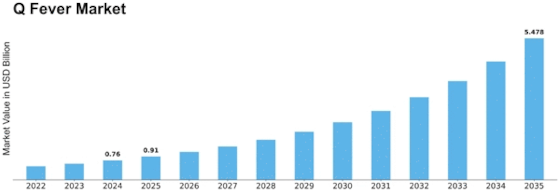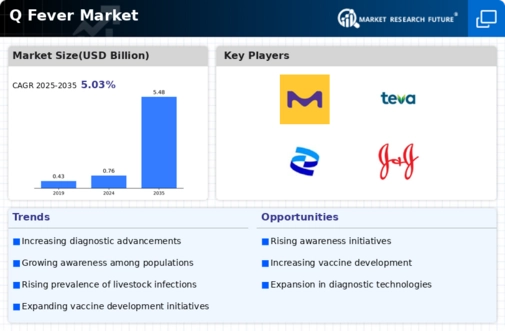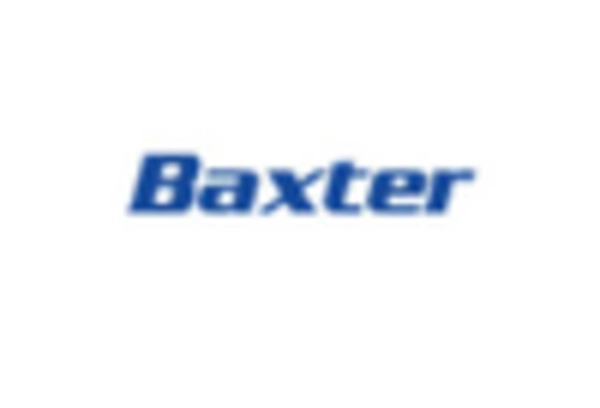Q Fever Size
Q Fever Market Growth Projections and Opportunities
A plethora of elements determines the dynamics and growth path of Q Fever market. One such crucial determinant is the occurrence rate and incidence of Q Fever, an infectious disease that originates from Coxiella burnetii bacteria. Whenever regions register high numbers of reported cases, there is often an increase in demand for diagnostic tools, therapeutic interventions as well as preventive measures thus contributing to general expansion of the Q fever market.
The market landscape has also been shaped by government regulations as well as healthcare policies. The severity of Q fever outbreaks usually necessitates regulatory bodies to put in place strict guidelines on how to diagnose, treat and prevent the same. Adherence to these laws becomes very important especially for companies operating in the Q fever market because this affects their standards as well as product development initiatives.
Q Fever Market is significantly influenced by advancements in technology relating to diagnostic techniques and treatment modalities. Molecular diagnostics and serological testing innovations improve accuracy and efficiency in diagnosing Q Fever whereas imaging technologies do enhance information on diagnosis too (DePuydt et al., 2012). Additionally, ongoing researches on new therapies contribute towards changes in treatment options which impact market dynamics.
Another critical market factor is economic environment including health care spending levels and insurance coverage rates. Adoption rate is determined majorly by whether or not a particular diagnostic test or treatment option has economic viability (Ministry-of-Health-Alberta, 2018). This means that where there are strong accessible healthcare systems, advanced diagnostics instruments would be more demanding hence contributing towards increasing size of these markets. Global travel patterns coupled with immigration affect the dynamics of Q fever market. As people cross borders increasingly so does the potential spread diseases like q fever disease.This requires development effective surveillance systems for quick detection tools plus international cooperation frameworks as a mitigation strategy against global q-fever threats.
Market factors include awareness campaigns about q fever amongst healthcare professionals and public education programs. Aware ness leads to early diagnosis, prompt intervention therapies and adopting preventive measures. Pharmaceutical companies and healthcare organizations come together in most cases in order to undertake education programs that guarantee q fever is diagnosed well as well as managed thus creating enabling environment for the market growth.
Environmental aspects such as climate and ecological change can also influence Q Fever occurrence. This bacterium is commonly associated with livestock, while environmental factors supporting the survival of its populations result into disease spread. Therefore it becomes very important to monitor these environmental factors so that effective strategies are made for management of Q fever.


















Leave a Comment